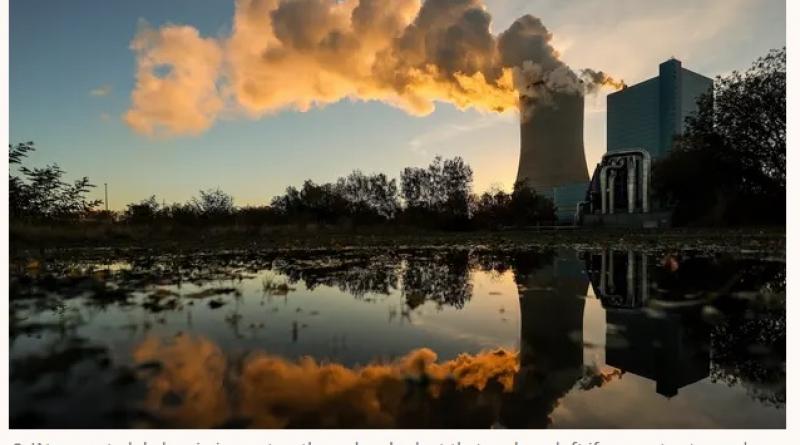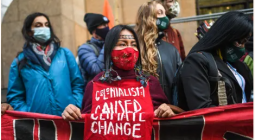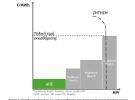The richest 10% produce about half of greenhouse gas emissions. They should pay to fix the climate

This is not simply a rich versus poor countries divide: there are huge emitters in poor countries, and low emitters in rich countries
Let’s face it: our chances of staying under a 2C increase in global temperature are not looking good. If we continue business as usual, the world is on track to heat up by 3C at least by the end of this century. At current global emissions rates, the carbon budget that we have left if we are to stay under 1.5C will be depleted in six years. The paradox is that, globally, popular support for climate action has never been so strong. According to a recent United Nations poll, the vast majority of people around the world sees climate change as a global emergency. So, what have we got wrong so far?
There is a fundamental problem in contemporary discussion of climate policy: it rarely acknowledges inequality. Poorer households, which are low CO2 emitters, rightly anticipate that climate policies will limit their purchasing power. In return, policymakers fear a political backlash should they demand faster climate action. The problem with this vicious circle is that it has lost us a lot of time. The good news is that we can end it.
Let’s first look at the facts: 10% of the world’s population are responsible for about half of all greenhouse gas emissions, while the bottom half of the world contributes just 12% of all emissions. This is not simply a rich versus poor countries divide: there are huge emitters in poor countries, and low emitters in rich countries.
Consider the US, for instance. Every year, the poorest 50% of the US population emit about 10 tonnes of CO2 per person, while the richest 10% emit 75 tonnes per person. That is a gap of more than seven to one. Similarly, in Europe, the poorest half emits about five tonnes per person, while the richest 10% emit about 30 tonnes – a gap of six to one. (You can now view this data on the World Inequality Database.)
Where do these large inequalities come from? The rich emit more carbon through the goods and services they buy, as well as from the investments they make. Low-income groups emit carbon when they use their cars or heat their homes, but their indirect emissions – that is, the emissions from the stuff they buy and the investments they make – are significantly lower than those of the rich. The poorest half of the population barely owns any wealth, meaning that it has little or no responsibility for emissions associated with investment decisions.
Why do these inequalities matter? After all, shouldn’t we all reduce our emissions? Yes, we should, but obviously some groups will have to make a greater effort than others. Intuitively, we might think here of the big emitters, the rich, right? True, and also poorer people have less capacity to decarbonize their consumption. It follows that the rich should contribute the most to curbing emissions, and the poor be given the capacity to cope with the transition to 1.5C or 2C. Unfortunately, this is not what is happening – if anything, what is happening is closer to the opposite.
It was evident in France in 2018, when the government raised carbon taxes in a way that hit rural, low-income households particularly hard, without much affecting the consumption habits and investment portfolios of the well-off. Many families had no way to reduce their energy consumption. They had no option but to drive their cars to go to work and to pay the higher carbon tax. At the same time, the aviation fuel used by the rich to fly from Paris to the French Riviera was exempted from the tax change. Reactions to this unequal treatment eventually led to the reform being abandoned. These politics of climate action, which demand no significant effort from the rich yet hurt the poor, are not specific to any one country. Fears of job losses in certain industries are regularly used by business groups as an argument to slow climate policies.
Countries have announced plans to cut their emissions significantly by 2030 and most have established plans to reach net-zero somewhere around 2050. Let’s focus on the first milestone, the 2030 emission reduction target: according to my recent study, as expressed in per capita terms, the poorest half of the population in the US and most European countries have already reached or almost reached the target. This is not the case at all for the middle classes and the wealthy, who are well above – that is to say, behind – the target.
One way to reduce carbon inequalities is to establish individual carbon rights, similar to the schemes that some countries use to manage scarce environmental resources such as water. Such an approach would inevitably raise technical and information issues, but it is a strategy that deserves attention. There are many ways to reduce the overall emissions of a country, but the bottom line is that anything but a strictly egalitarian strategy inevitably means demanding greater climate mitigation effort from those who are already at the target level, and less from those who are well above it; this is basic arithmetic.
Arguably, any deviation from an egalitarian strategy would justify serious redistribution from the wealthy to the worse off to compensate the latter. Many countries will continue to impose carbon and energy taxes on consumption in the years to come. In these contexts, it is important that we learn from previous experiences. The French example shows what not to do. In contrast, British Columbia’s implementation of a carbon tax in 2008 was a success – even though the Canadian province relies heavily on oil and gas – because a large share of the resulting tax revenues goes to compensate low- and middle-income consumers via direct cash payments. In Indonesia, the ending of fossil fuel subsidies a few years ago meant extra resources for government but also higher energy prices for low-income families. Initially highly contested, the reform was accepted when the government decided to use the revenue to fund a universal health insurance and support to the poorest.
To accelerate the energy transition, we must also think outside the box. Consider, for example, a progressive tax on wealth, with a pollution top-up. This would accelerate the shift out of fossil fuels by making access to capital more expensive for the fossil fuel industries. It would also generate potentially large revenues for governments that they could invest in green industries and innovation. Such taxes would be politically easier to pass than a standard carbon tax, since they target a fraction of the population, not the majority. At the world level, a modest wealth tax on multimillionaires with a pollution top-up could generate 1.7% of global income. This could fund the bulk of extra investments required every year to meet climate mitigation efforts.
Whatever the path chosen by societies to accelerate the transition – and there are many potential paths – it’s time for us to acknowledge there can be no deep decarbonization without profound redistribution of income and wealth.
-
Lucas Chancel is co-director of the World Inequality Lab, an affiliate professor at Sciences Po, and the author of Unsustainable Inequalities: Social Justice and the Environment






